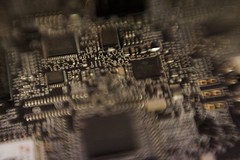How to find funding for your hardware startup while we’re waiting for the hardware revolution
Entrepreneurship
Despite the recent media buzz surrounding the hardware revolution and emerging maker space, the overwhelming majority of hardware startups have a hard time attracting financing today. Hardware requires time, money, and inventory. As a result, most venture capitalists are reluctant to touch hardware projects, opting for the lower costs and smaller risks of software.
While my portfolio is primarily centered around consumer internet as well as enterprise SaaS startups, I typically talk to two to three hardware startups each week. Here’s the advice I give these teams who are navigating the tough world of hardware financing.
1. De-risk your startup as much as possible
Manufacturing innovations like 3D printing support quicker and cheaper prototyping and design. This means the overall costs of launching a hardware product are coming down considerably, yet hardware is still costlier (and thus riskier) than software. To increase your chances of venture capital financing, you’ll need to lower the risks as much as possible, such as:
- Bootstrapping as long as you can to get a working prototype into the market.
- Following an iterative manufacturing process. Instead of taking a year to develop and launch one product, it might be advantageous to run through four development cycles in smaller batches.
- Having at least one team member with a deep background in hardware manufacturing.
2. Focus on VCs who have done hardware before
The reality is that few venture capitalists are ready to write a check to a hardware startup today, and it’s not all due to the risk. Many VCs have a background in software and are less familiar and comfortable with bringing hardware projects to market. In order to minimize the time wasted during fundraising, you should focus your efforts on venture capitalists that have done at least one hardware deal. For example, Softtech and True Ventures funded FitBit.
3. Patents versus traction
In the software space, it is commonly accepted that barriers to entry are no longer created by patents or by tech differentiation alone, but by superior traction in the marketplace. One could argue that the same development will hold true in the hardware space. Therefore, when you pitch investors, it’s wiser to focus on the traction you have built up in the market rather than pitching your patents.
4. Look at crowdfunding options
Crowdfunding sites like Kickstarter and my portfolio company Indiegogo are helping fill the financing void for hardware projects. For example, Pebble (a watch that wirelessly connects to a smartphone and displays its messages) raised $10M on Kickstarter in 2012. Muse (a brain sensing headband that lets you control things with your mind) raised $287K on Indiegogo.
Along with providing much-needed cash in the early days, success in a crowdfunding community shows product validation and market demand, since people are committing to a particular product. However, there’s a challenge when your investors are also your customers. Production delays are quite common with hardware projects and, as Pebble found out, it’s easy to disappoint customers when dates are missed.
In addition to gathering seed money, hardware startups are also finding success in raising working capital to buy parts via online fundraisers on Tindie (another portfolio company).
The making of a hardware revolution
It feels like we are still in the early stage of the hardware revolution. With further refinement of design, prototyping, and manufacturing tools, the costs and risks associated with hardware should come down enough so that hardware becomes palatable to traditional funding sources. With Lemnos Labs, we already have a hardware-focused incubator, so it will only be a matter of time before we see VC funds emerge that focus exclusively on hardware. In the meantime, hardware startups should look for innovative ways to get their product to market.
Related articles
- How a Garage-Based Incubator Is Fueling the Hardware Revolution (adafruit.com)
- Hardware is Feeding the World (taylordavidson.com)
